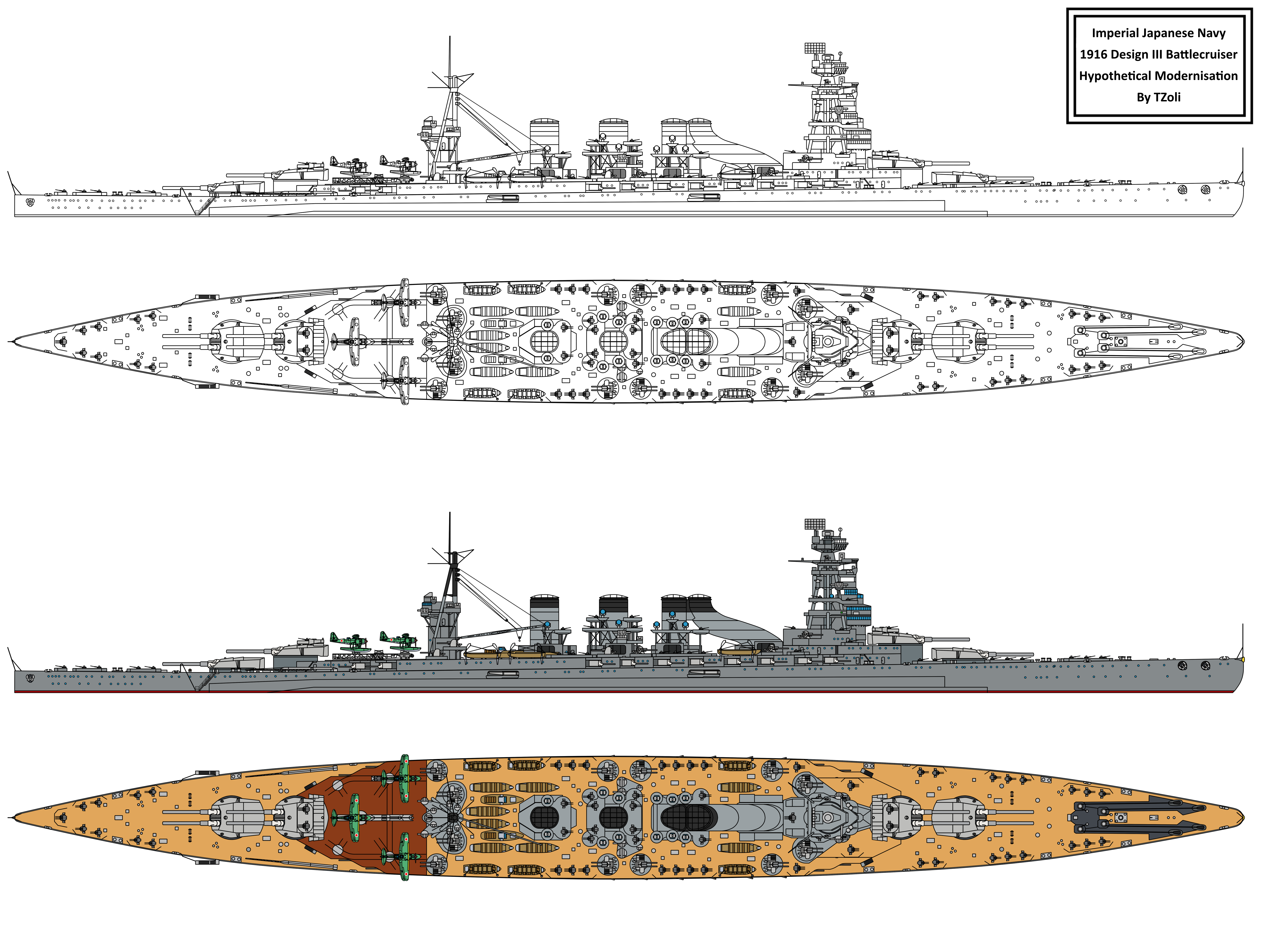- Joined
- 1 February 2011
- Messages
- 2,939
- Reaction score
- 3,624
Not much I know about the history of these 4 battlecruiser studies, but they were proposed in 1916 as very fast and large capital vessels with good armour and armament. Their armour and armament was almost the same as the Nagato class battleships but speed was chosen for 34,5 or 35knots. My idea that these ships were actually the battlecruiser versions of the Nagato class battleships. Later these studies were used for the B-62 design battlecruisers (A through F) which were (among many) are the preliminary designs of the Amagi class battlecruisers (design B-64).
The unique things about these studies are the large size together with strong engines and 6 shafts to achieve the desired speed.
All images are from the Hiraga archive of University Toyko.
Sidenote: The 14" 3rd year type cannons listed in the documents are actually the 41cm Type 3 (3rd year type) cannons used on Nagato, Amagi, Tosa and Kii classes. The designation is for secrecy, the only large calibre Type 3 cannons the IJN had at that time was the 41cm.
Data pages:






Original drawings:
Design I:

Design II:

Design III:

Design IIII:

Arrangement of 6 shafts of Design I and III:

Arrangement of 6 shafts of Design II and IIII:

My take for a modernised Design III:

The unique things about these studies are the large size together with strong engines and 6 shafts to achieve the desired speed.
All images are from the Hiraga archive of University Toyko.
Sidenote: The 14" 3rd year type cannons listed in the documents are actually the 41cm Type 3 (3rd year type) cannons used on Nagato, Amagi, Tosa and Kii classes. The designation is for secrecy, the only large calibre Type 3 cannons the IJN had at that time was the 41cm.
Data pages:






Original drawings:
Design I:

Design II:

Design III:

Design IIII:

Arrangement of 6 shafts of Design I and III:

Arrangement of 6 shafts of Design II and IIII:

My take for a modernised Design III:

